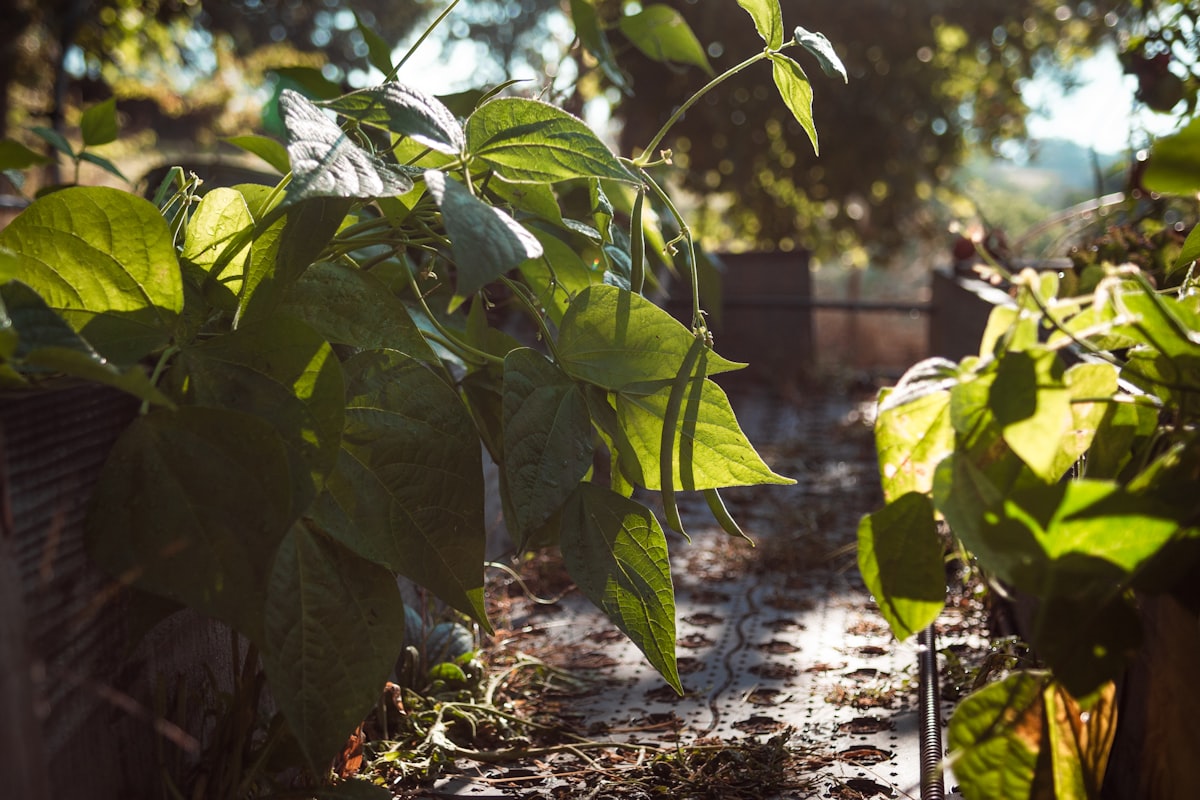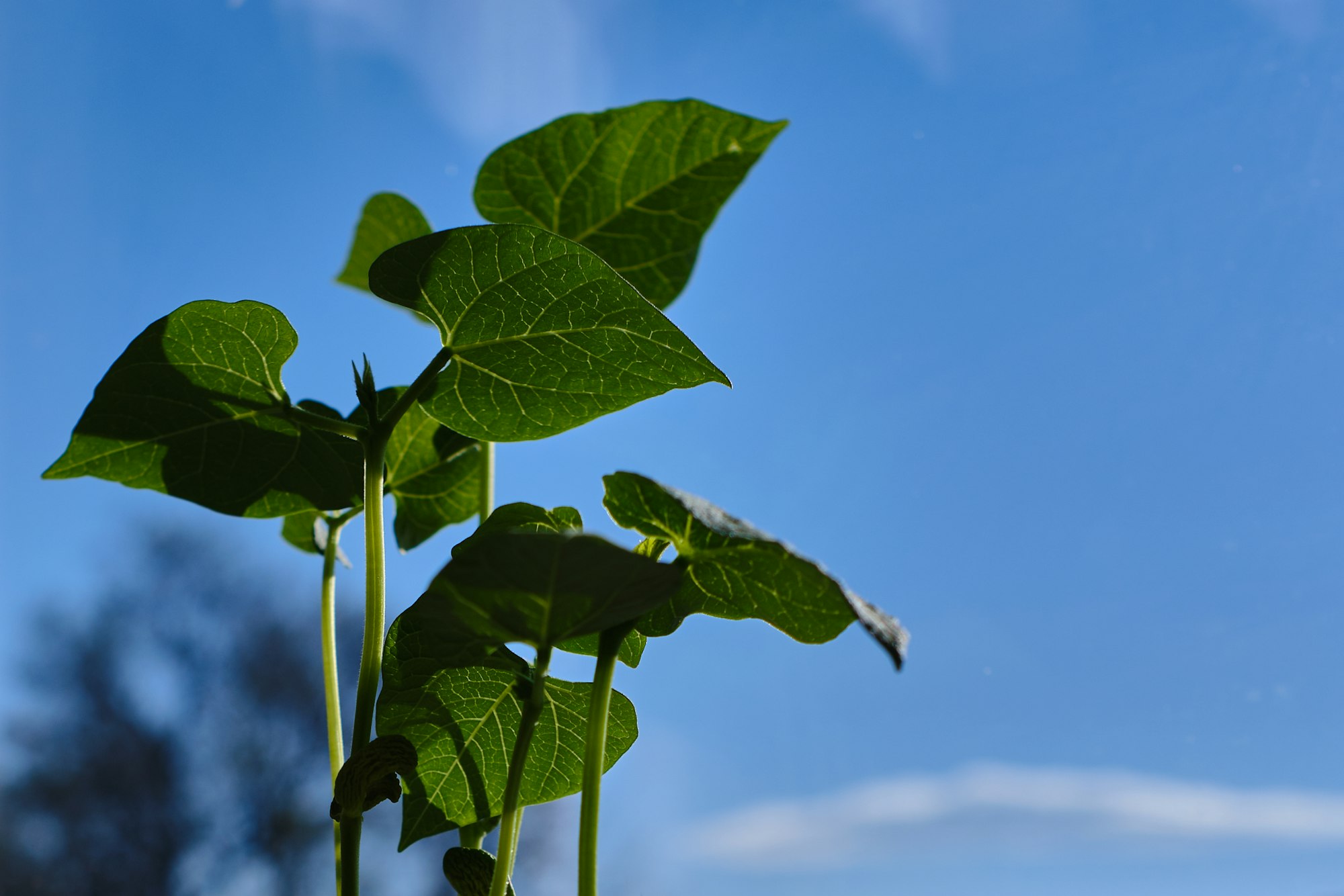How to Grow Green Beans
These versatile and tender annual vegetables, also known as string beans or snap beans, are a delight to cultivate.

Table of Contents
With minimal care, they can produce large quantities, making them a perfect addition to any vegetable garden.
Growing green beans is a rewarding endeavor for gardeners of all skill levels.
There are two primary green bean varieties: bush beans and pole beans.
Bush beans are a reliable and easy harvest option, growing to about 1-2 feet high and spreading along the ground.
On the other hand, pole beans require some type of support, such as a trellis, and can grow up to 6-8 feet tall, making them an excellent choice for gardeners with limited space.
About Green Beans
Green beans, known as Phaseolus vulgaris, are a popular vegetable in the common bean family.
From the compact and sturdy bush beans to the lofty and climbing pole beans, each variety brings its unique characteristics.
Understanding these differences can help you choose the right type for your garden, ensuring a bountiful and satisfying harvest.
There are two basic types of green bean plants: bush beans and pole beans.
Bush beans grow low to the ground, reaching heights of 1-2 feet, while pole beans grow on supports, achieving heights of up to 8 feet.
With their easy-to-grow nature and productivity, green beans make an excellent addition to your vegetable garden.
Planting Green Beans
Embarking on planting green beans in your garden starts with a choice between bush and pole beans.
Bush beans spread out low to the ground and are incredibly easy to manage, while pole beans offer a vertical spectacle, climbing to impressive heights.
For a successful start, plant your seeds when the soil warms to at least 60°F after the last frost, ensuring optimal germination and growth.
Bush beans are easy to grow, spreading out on the ground and reaching a height of 1-2 feet, while pole beans require support as they climb to heights of 8-12 feet.
Both varieties thrive in full sun and well-draining soil.
To extend your harvest, sow seeds every three weeks until the end of June.
Remember that green beans have shallow roots, so be gentle when transplanting seedlings or working around them in the garden.
Caring for Green Beans Plant
Sun and Temperature
Green beans thrive in full sun, requiring six to eight hours of sunlight daily. They grow best in temperatures between 60-85°F (15-30°C), so sow your seeds in the spring after the last frost.
Water and Humidity
Ensure your green bean plants receive about 1 to 1.5 inches of water weekly. Keep the soil moist, but avoid overwatering to prevent root rot and diseases.
Humidity levels should be moderate; if it gets too high, consider increasing air circulation to prevent fungal growth.
Soil and Fertilizing
Green beans do well in well-drained, loamy soil with a pH between 6.0 and 6.5. Add compost or aged manure to improve soil structure and drainage.
Since legumes, such as green beans, can fix nitrogen in the soil, avoid excessive nitrogen-based fertilizer application. Instead, use a balanced fertilizer at planting time and again after the first set of flowers appear.

Pruning and Propagation
Regularly check your plants for dead, damaged, or diseased foliage and promptly remove them. Pruning can encourage bushier growth and better air circulation, which prevents diseases.
Propagate green beans via seeds, directly sowing them into the soil. Thin seedlings are around 4 inches apart once they emerge and are a few inches tall.
Troubleshooting Plant Problems
Growing Problems
Green beans, like all plants, can face challenges. Pests such as aphids and diseases like rust can hinder their growth.
Implementing an integrated pest management approach, including regular inspection, natural remedies like Neem oil, and proper plant spacing, can effectively control these issues.
Healthy plants are less susceptible to pests and diseases, so maintaining ideal growing conditions is essential.
Maintaining ideal soil, water, and temperature conditions is crucial to growing green beans successfully. Keep your soil moist but well-drained, and ensure the soil temperature is between 60-85°F for optimal germination and growth.
Green beans thrive in temperatures between 65-85°F but are frost-tender, so avoid planting them too early in the growing season.
Failing to provide consistent soil moisture during and after bloom can lead to poor pod development and flower drop. Using a phosphorus-heavy fertilizer and applying mulch to retain moisture can help promote healthy green bean growth.
Remember that high temperatures or cold weather can negatively impact growth and potentially lead to plant death.
Pests and Diseases
Aphids, Mexican bean beetles, and Japanese beetles are common pests that can damage green bean plants.
Frequent inspection and prompt removal of affected plant parts are necessary to manage these pests. For heavier infestations, consider using insecticides like Neem oil or insecticidal soap.
On the other hand, fungal diseases like rust and powdery mildew can also affect green beans. Yellow-orange pustules on leaves and stems characterize rust; remove and dispose of infected plants to prevent its spread.
Treat powdery mildew with sulfur-based fungicides and ensure your plants receive adequate sunlight, proper spacing, and airflow to prevent it from developing.
Regularly rotating green bean plants to different locations in your vegetable garden can also help minimize the risk of pests and disease.
Conclusion
In conclusion, cultivating green beans can be a rewarding experience for any gardener.
The process is filled with learning and enjoyment, from selecting the perfect variety to nurturing them through each growth stage.
As you harvest your crisp, fresh beans, you'll appreciate the effort and care that went into producing this delectable bounty.
So go ahead, choose your favorite type, and get ready to enjoy the fruits of your labor.
Frequently Asked Questions
When to plant beans?
Plant bean seeds 1 inch deep and 2 inches apart, thinning to the best plants at 4 inches apart. Sow seeds every three weeks until the end of June for a prolonged harvest.
Which varieties of beans are best for growing?
Your success at growing green beans partially depends on choosing a good variety. Many options are available, and not all are green - select the variety that best suits your needs and climate.
Do pole beans require support structures?
Yes, pole beans need support structures like trellises or stakes. Ensure the support is 6 to 8 feet tall and in place before you seed. Bush beans, on the other hand, do not require support.
What are the stages of green bean growth?
Green bean growth includes germination, vegetative growth, flowering, and fruiting. Germination occurs within 8-10 days, followed by vegetative growth, where leaves and stems develop. The plant then produces flowers before bearing beans.
How to maintain healthy green bean plants?
Ensure your green beans receive full sun for six to eight hours daily and provide appropriate water, nutrients, and care.
Use a low-nitrogen fertilizer and regularly check for pest issues to keep your green bean plants healthy and productive.


